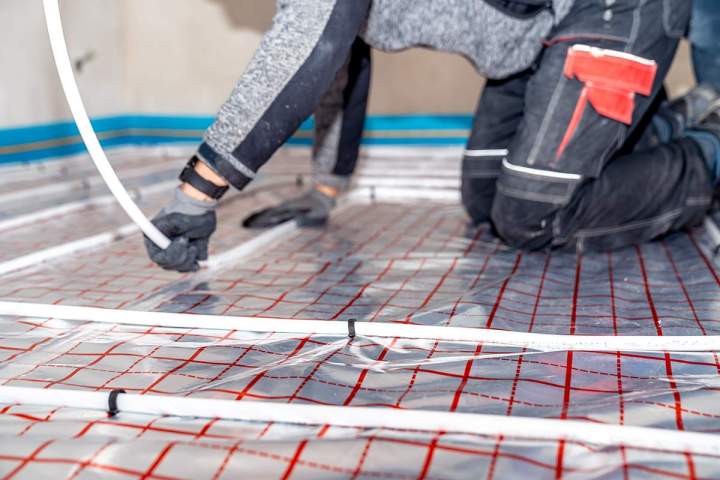Is water radiant flooring governed by a code?
Floor Microclimat / August 14, 2025

Here's an overview of the standards and codes that apply to this type of system, as well as some important points to keep in mind during installation.
1. Canadian Construction Code (CCC):
- The National Building Code of Canada (NBC) is a set of standards governing the construction of buildings in Canada, including heating systems. It includes requirements for materials and construction techniques, and is regularly updated to incorporate best practices and technologies.
- Thermal and energy requirements: The NBC sets requirements for insulation, energy performance, and distributed heat. Radiant heating systems must be designed to maximize efficiency and minimize energy consumption.
- Safety: The NBC imposes strict rules regarding the safety of heating systems. For example, for an electrical system, the wiring must comply with electrical codes to avoid any risk of fire or overheating.
2. Quebec Construction Code:
The B216 Hydronic Code
The Quebec Construction Code (CCQ) also refers to local requirements and is based on the National Building Code, but may have additional specifications adapted to the specific climate and conditions of Quebec.
Here are some key points from the CCQ regarding radiant heating:
- Pipe Installation (Water Radiant Floor Heating): If you choose a hot water system (hydronic radiant), the pipes must be installed correctly and respect the minimum distances between the pipes and the structural elements of the building. In addition, a professional must check the system's tightness to prevent future leaks.
- Insulation: Insulation under the radiant floor is essential to ensure that heat is not lost downward (into a cellar or basement, for example). The R-factor of the insulation used must comply with local requirements. Generally, insulation with an R-factor of 2 to 3 is recommended under water radiant heating systems, but this can vary depending on the geographical location and the quality of wall and roof insulation.
- Additional Regulations (for installation)
3. Material specifications:
The materials used for radiant heating systems, such as pipes (for a hydraulic system) or cables (for an electrical system), must meet quality and safety standards:
PEX (cross-linked polyethylene) pipes are commonly used for hot water systems. PEX must be type PEX-A (the most flexible and strongest) and meet quality and durability standards.
Role of a qualified professional:
Given the complexity and regulations surrounding radiant heating installation, it is strongly recommended that you hire a qualified professional. A plumbing or heating expert will be able to comply with local standards, ensure that all materials are certified and suitable for your project, and ensure that the installation complies with building codes. Additionally, a professional can help you obtain permits if necessary and ensure that the installation is inspected according to requirements.